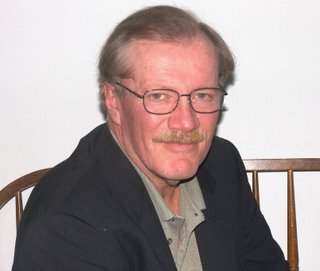 Where are all the great
Where are all the great young American
women golfers?
Asks DAVE ANDREWS
An insight into the state of play in American female golf
There is not one teenage girl who plays golf at my home course on even a semi-regular basis… not one! How many teenage girls do you see playing at your course?
It is time for a wake up call for executives and coaches in women’s golf here in the United States. If they do not develop more young American players to compete with players emerging from other countries, women’s professional golf in the United States could be in serious trouble.
The make-up of the LPGA is becoming more international every year. The question that many in the golf world are now asking is whether that trend will threaten the economic viability of the tour here in the United States.
The United States has always been the economic base of the LPGA. The great majority of the tour’s events are played in this country. Most of corporate sponsors of those events are American companies. Most of the spectators and pro-am participants who support those events are Americans.
The LPGA is going to have to determine if it can continue to attract American support of its events if the number of American players on the tour continues to erode. Are Americans going to continue to follow a sport that is increasingly being dominated by foreign players?
Consider these facts…
In 2000, there were 117 American players in the top 150 on the LPGA money list.
Today there are only 59.
In 2000, 33 of the top-50 money winners on the tour were Americans.
This year there are only 13.
37 of the top-50 players on the tour come from other countries.
South Korea is now the growing dominant force on the LPGA. It is an amazing phenomenon that has developed in less than a decade. It is even more amazing when you consider that the population of South Korea is only 50 million people, compared to 315 million here in the U.S.
Eight years ago there were only 6 South Korean players in the top 150 on the LPGA’s money list. This year there are 38 South Korean players and just 59 Americans. In just eight seasons the number of South Koreans has increased more than six-fold. The number of Americans has been cut in half. If those two trends continue at or near the current pace, South Korean players could come close to outnumbering Americans on the tour in a few more seasons.
The South Korean phenomenon is even more dramatic when you look at the top 50 on the money list. The players in the top 50 are customarily the winners and the contenders in the individual events over the course of a season. They are the players whose names are listed on the leaderboards and who receive the most coverage on television, and in newspapers and magazines. This season there are 17 South Koreans in the top 50. There are only 13 Americans. The other 20 players in the top 50 come from eleven other countries… Sweden (5), Australia (3), Norway (2), Taiwan (2), Japan (2), England (1), China (1), Mexico (1), Brazil (1), Scotland (1), and Italy (1).
Increasingly, players from other countries are qualifying to play on the LPGA as teenagers. With Paula Creamer, Morgan Pressel, and Vicky Hurst as notable exceptions, American players generally spend four years in college programs before they attempt to turn professional.
Why are college women’s golf programs here in the U.S. unable to develop players capable of competing with the young teenage stars coming from much smaller countries like South Korea?
Many golf fans will argue that the LPGA has long been the home of the best women golfers in the world. That is a fact. They will also argue that there have always been many players from several different countries on the tour. That is also a fact. However, it is also a fact that the LPGA itself is concerned about maintaining its sponsor and fan base here in the United States. Its attempt to impose a policy mandating that all tour players learn minimal English language skills is evidence of that. That proposed policy generated a swirl of controversy with charges of xenophobia and discrimination leveled at the tour by many in the media and the public. However, if the LPGA loses the support of sponsors and fans in this country it will be a serious financial blow to the tour and to all of the players on it, regardless of what country they come from.
Developing more great young women golfers here in the United States is one solution to the problem with which nobody can argue. The only concrete answer to protecting the future of the LPGA in this country is for American players to become better golfers. That won’t happen until we begin seeing more young teenage girls teeing it up at courses all over the country.
Next article: How can South Korea, a country with only 50 million people and fewer than 250 golf courses, dominate the United States in women’s professional golf?
A FEW NOTES ON THE AUTHOR
Dave Andrews (pictured above) is a Harvard-educated former television news reporter. He's also an avid golfer who has become a fan of the Duramed Futures Tour. His home course in Concord, New Hampshire, is annually the site of one of the tour's events.
The inspiration for Dave's 2007 novel, "Pops and Sunshine," came from meeting many of the young aspiring women golfers on that tour. Each of them has a passion, dedication and determination that he finds remarkable.
His novel is a fictionaliSation of the dream that these young women share. To order Dave's book, visit http://popsandsunshine.com.
Asks DAVE ANDREWS
An insight into the state of play in American female golf
There is not one teenage girl who plays golf at my home course on even a semi-regular basis… not one! How many teenage girls do you see playing at your course?
It is time for a wake up call for executives and coaches in women’s golf here in the United States. If they do not develop more young American players to compete with players emerging from other countries, women’s professional golf in the United States could be in serious trouble.
The make-up of the LPGA is becoming more international every year. The question that many in the golf world are now asking is whether that trend will threaten the economic viability of the tour here in the United States.
The United States has always been the economic base of the LPGA. The great majority of the tour’s events are played in this country. Most of corporate sponsors of those events are American companies. Most of the spectators and pro-am participants who support those events are Americans.
The LPGA is going to have to determine if it can continue to attract American support of its events if the number of American players on the tour continues to erode. Are Americans going to continue to follow a sport that is increasingly being dominated by foreign players?
Consider these facts…
In 2000, there were 117 American players in the top 150 on the LPGA money list.
Today there are only 59.
In 2000, 33 of the top-50 money winners on the tour were Americans.
This year there are only 13.
37 of the top-50 players on the tour come from other countries.
South Korea is now the growing dominant force on the LPGA. It is an amazing phenomenon that has developed in less than a decade. It is even more amazing when you consider that the population of South Korea is only 50 million people, compared to 315 million here in the U.S.
Eight years ago there were only 6 South Korean players in the top 150 on the LPGA’s money list. This year there are 38 South Korean players and just 59 Americans. In just eight seasons the number of South Koreans has increased more than six-fold. The number of Americans has been cut in half. If those two trends continue at or near the current pace, South Korean players could come close to outnumbering Americans on the tour in a few more seasons.
The South Korean phenomenon is even more dramatic when you look at the top 50 on the money list. The players in the top 50 are customarily the winners and the contenders in the individual events over the course of a season. They are the players whose names are listed on the leaderboards and who receive the most coverage on television, and in newspapers and magazines. This season there are 17 South Koreans in the top 50. There are only 13 Americans. The other 20 players in the top 50 come from eleven other countries… Sweden (5), Australia (3), Norway (2), Taiwan (2), Japan (2), England (1), China (1), Mexico (1), Brazil (1), Scotland (1), and Italy (1).
Increasingly, players from other countries are qualifying to play on the LPGA as teenagers. With Paula Creamer, Morgan Pressel, and Vicky Hurst as notable exceptions, American players generally spend four years in college programs before they attempt to turn professional.
Why are college women’s golf programs here in the U.S. unable to develop players capable of competing with the young teenage stars coming from much smaller countries like South Korea?
Many golf fans will argue that the LPGA has long been the home of the best women golfers in the world. That is a fact. They will also argue that there have always been many players from several different countries on the tour. That is also a fact. However, it is also a fact that the LPGA itself is concerned about maintaining its sponsor and fan base here in the United States. Its attempt to impose a policy mandating that all tour players learn minimal English language skills is evidence of that. That proposed policy generated a swirl of controversy with charges of xenophobia and discrimination leveled at the tour by many in the media and the public. However, if the LPGA loses the support of sponsors and fans in this country it will be a serious financial blow to the tour and to all of the players on it, regardless of what country they come from.
Developing more great young women golfers here in the United States is one solution to the problem with which nobody can argue. The only concrete answer to protecting the future of the LPGA in this country is for American players to become better golfers. That won’t happen until we begin seeing more young teenage girls teeing it up at courses all over the country.
Next article: How can South Korea, a country with only 50 million people and fewer than 250 golf courses, dominate the United States in women’s professional golf?
A FEW NOTES ON THE AUTHOR
Dave Andrews (pictured above) is a Harvard-educated former television news reporter. He's also an avid golfer who has become a fan of the Duramed Futures Tour. His home course in Concord, New Hampshire, is annually the site of one of the tour's events.
The inspiration for Dave's 2007 novel, "Pops and Sunshine," came from meeting many of the young aspiring women golfers on that tour. Each of them has a passion, dedication and determination that he finds remarkable.
His novel is a fictionaliSation of the dream that these young women share. To order Dave's book, visit http://popsandsunshine.com.
Labels: Pro Ladies









<< Home